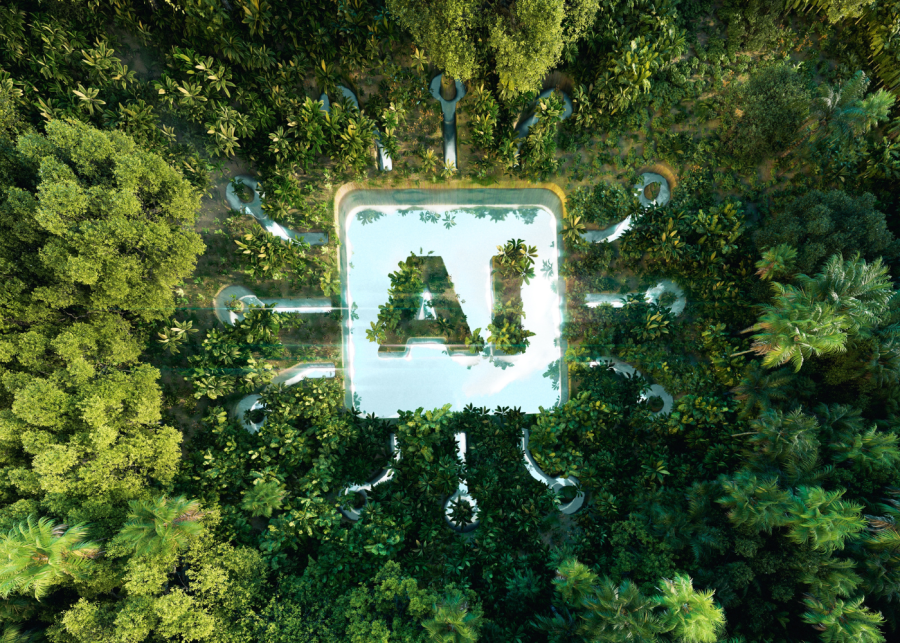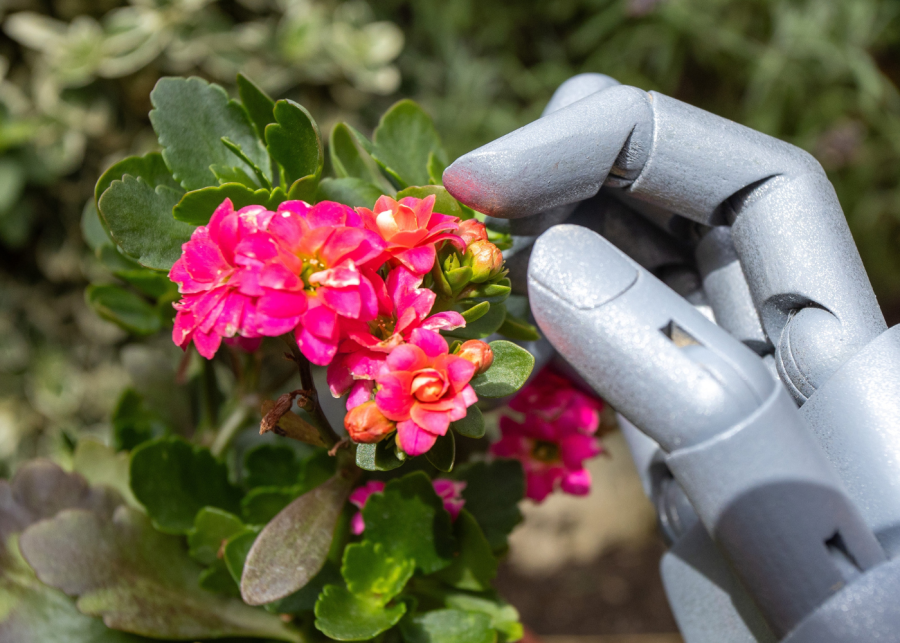
AI and sustainability are like oil and water – they don’t mix. But is there a way for them to come together harmoniously? I speak to AI and sustainability experts to find out.
Remember when sustainability was all the rage? We were squeezing our trash into mason jars, buying metal straws, and forgoing plastic bags. Now, our attentions are overtaken by the next growing phenomenon – artificial intelligence in Singapore. Is AI sustainable? Far from it. And yet, I see some of the loudest eco-advocates whispering to ChatGPT without blinking. This leads to my question: if AI is bleeding our planet dry, why are we in a rush to use it? Should we even be embracing it at all?
The answer is complicated and nuanced. But in short: intentional use of this growing technology could be the key to rectifying the harms it has already caused. If users learn how to use it properly, and if developers build it consciously, we could be on our way to more sustainable technology.
How is AI hurting the planet?

Think of a library. When you want a specific book, the librarian, Mr. Google, is there to help and even throws in extra suggestions. Simple and straightforward. However, if you need the book explained, turn to Mr. AI. He’ll find the book, spend weeks reading it, study the material, and pull all-nighters to prepare a report for you. It sounds great, until you realise how much energy that takes.
Matthew Chew, co-founder of Eon Protocol, tells me one ChatGPT question eats up 25% of your phone battery. Imagine draining a fully charged phone on four ChatGPT questions! With 2.5 billion questions asked daily, it’s enough electricity to charge eight million mobile phones, or power 30,000 homes for a day. Add Gemini, DeepSeek, Claude, and more, and you could run a small country.
But electricity isn’t the only environmental concern. ChatGPT’s “brain” is a data centre made up of thousands of computers. Like your laptop after a Netflix binge, it gets hot. What do we use to cool it down? 1 million litres of water a day, enough for 7,000 households.
This is especially daunting as we’re facing a water crisis, and it puts pressure on local supplies and communities facing drought. “Fresh water is a finite resource. And while there are desalination plants, they’re expensive for a lot of countries,” says Stephanie Dickson, founder of The Wedge Asia.
Given the staggering numbers without a proper solution, it’s no wonder AI is looking more like an environmental villain.
Surprise, AI is shockingly helpful in sustainability

As easy as it is to hate on AI, I’m not going to deny the benefits it has. Besides making work more efficient, it also has a part to play in sustainability.
Gaurav Sharma, digital sustainability product manager of BT Group, says that with the power of AI, we could be looking at optimised supply chains, improved energy efficiency, and even predicting climate risks. All these things could help reduce waste. The effects of energy-saving AI tactics have even been proven today.
Bruce Yang, founder of Agnes AI, notes Google’s experiments with renewable energy. AI has been able to predict wind farm outputs to increase energy efficiency, and AI-based irrigation systems cut water usage by 30%. Things that seem to be leading us into the right path of undoing the damage that’s been caused.
While these wins don’t erase AI’s heavy footprint, I’d say there’s potential in the vast amount of good AI can do. But is potential a good enough reason to continue training large language models at the expense of our limited resources?
It has pros and cons – where do we go from here?

If you’re still stuck at a crossroads on what to do, you’re not alone. Even as I write this, I struggle with the ethical dilemma and desire for innovation. But I believe the answer isn’t as black and white as supporting or hating AI.
I equate AI’s growth to a modern-day industrial revolution – full of positive change that will come with many downsides as it evolves. There’s no denying the incredible use cases AI has. But the daunting reality is that these innovations come at a heavy cost. The world is facing a global climate crisis, and AI’s harms aren’t theoretical – they’re happening right now.
So, where does that leave us? We can’t opt out of AI completely – Google and other platforms have already baked it into systems we use every day. But what I’ve learned after speaking with the experts is that intention and accountability can lead to big changes if we use these systems responsibly. It’s not just about how you use AI; it’s also about design.
The burden lies with the creators

“I definitely think it’s not a responsibility on the consumers to fix AI,” Bruce says. Instead, he believes it’s up to developers to create efficient models. In his work, his team focuses on finding the optimal answer for each query asked through Agnes AI, so that users will enter fewer queries and thus use less energy.
“We need developers who don’t just wonder if we can build it, but whether we should,” Stephanie says. She believes founders hold the greatest power in shrinking AI’s carbon footprint, from prioritising efficient models to powering data centres with renewable energy sources.
Gaurav concurs: making AI sustainable means looking at its entire lifecycle, not just the point of use. Besides using renewable and carbon-free energy sources, the longevity of a server’s hardware adds to sustainable efforts. But what’s equally important is governance. “With clear sustainability reporting and responsible material sourcing, it creates accountability and pressure for continuous improvement,” he says.
The opinion is unanimous: people creating large language models and AI should take responsibility. They’re the ones designing the systems, after all. The burden starts at the top – their choices today will define the footprint we live with tomorrow.
Make conscious choices as a user

The burden doesn’t fall squarely on us, but our habits matter. By choosing to engage more responsibly and by demanding transparency from the platforms we use, we can send a clear signal: sustainability isn’t optional.
Stephanie reminds us, “Tech is a tool. It’s not a replacement for intuition, community, or common sense.” It’s important to use AI with intention, instead of defaulting to it for every small task.
Bruce agrees, saying being conscious in the way we prompt is key. “If people find the answer they need on the first try, they’ll stop entering more queries,” he says. That’s where mindful use comes in. As users, we can ask better, sharper questions instead of endless prompting.
Gaurav adds that the average person can reduce their digital carbon footprint by cleaning up old files, unsubscribing from endless emails, and limiting unnecessary cloud storage. These may sound small, but multiplied across millions of users, the effect compounds.
Beyond using it, Matthew reminds us that we can enact change should we use it for good. “The younger generations have a voice. If you demand that companies publish environmental impact reports and refuse to use them if you don’t, they’ll have to change,” he tells me. At the end of the day, AI creation serves users.
Responsible use could reverse the damage we’ve done

I’m the last person to wax poetic about AI and its rapid growth. It grew on the backs of creatives, learning from written and illustrated works, then recreating them. Now, people think this means we don’t need artists or writers in the spirit of speed and cost-effectiveness. But framing it purely from the lens of productivity misses the bigger picture.
It’s clear that AI isn’t going anywhere, but neither is the climate crisis. AI has great potential to do a lot of things for the Earth and society as a whole. But potential isn’t enough. What matters right now is how it’s being built, accountability, and conscious understanding of its capabilities. Can it repair the damage it’s already done? I believe so, with the right intentions and build.
I’m cautiously optimistic about AI’s growth; like any piece of technology, there’ll be a way to make it more energy-efficient. Until then, I’ll be using it consciously, championing accountability, and keeping sustainability at the forefront of the conversation. Because progress without responsibility means no progress at all.


